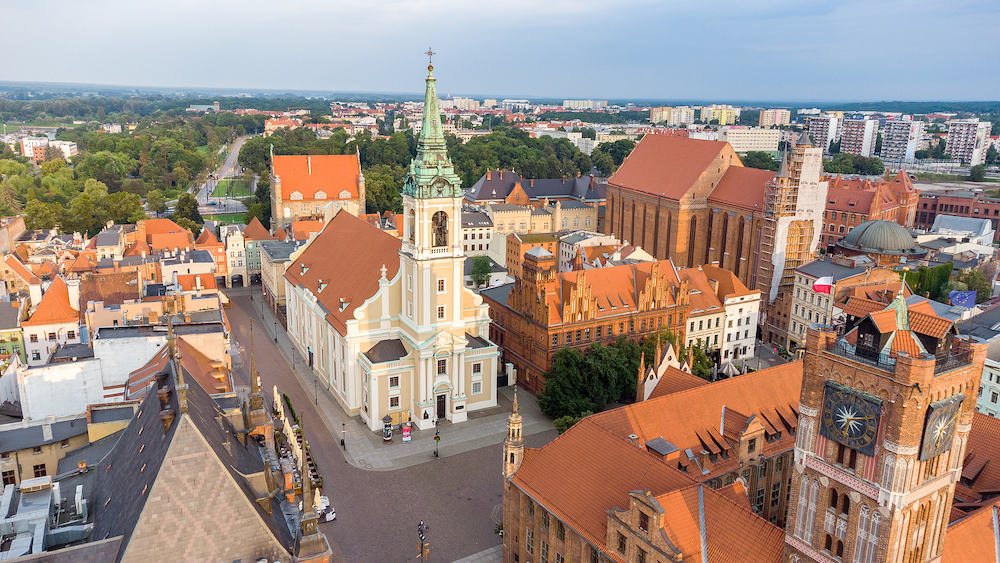3 Days itinerary for Krakow
There’s a Polish proverb that goes like this, “You become whom you befriend”. Krakow is certainly a friend that will change you for the better. The city feels like you’re meeting a long lost friend from a different country.
It makes sure that it shows off its best culture, food and sights to all those who pass through – And that’s exactly what you’re going to get from this 3 Day Itinerary for Krakow.
You may be wondering if 3 days is enough to visit Krakow or if you’re wondering what to see in Krakow in 3 days. While everyone is different, this 3 day weekend in Krakow will hit all the right spots.
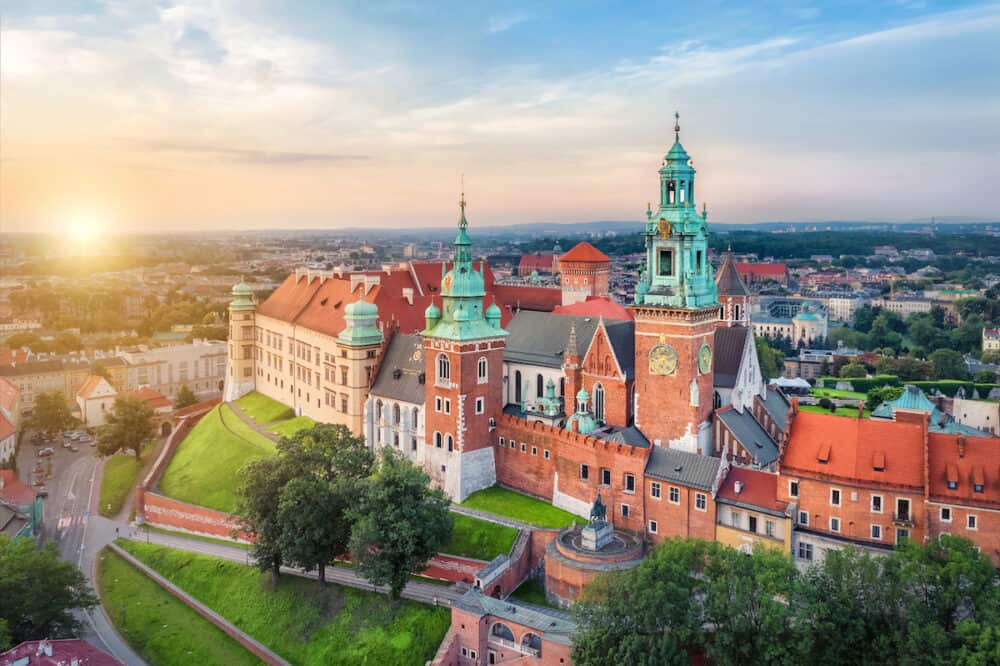
Stare Miasto is the historic heart of Krakow and a UNESCO World Heritage site. It’s known for its picturesque cobblestone streets, beautiful architecture, and the stunning Main Market Square (Rynek Główny). Staying in this area allows easy access to major landmarks like Wawel Castle, St. Mary’s Basilica, and the Cloth Hall.
Located just South of the Old Town, Kazimierz is the city’s former Jewish quarter. It has undergone a revitalization in recent years and is now a trendy and artistic neighborhood. Kazimierz offers a bohemian atmosphere, excellent restaurants, lively nightlife, and historical sites like the Remuh Synagogue and the Old Jewish Cemetery.
Situated across the Vistula River from the Old Town, Podgórze has a more laid-back and residential vibe. It is known for its rich history, including the former Jewish Ghetto and the Schindler’s Factory Museum. Podgórze also offers lovely green spaces, such as Bednarski Park, and panoramic views from the Krakus Mound.
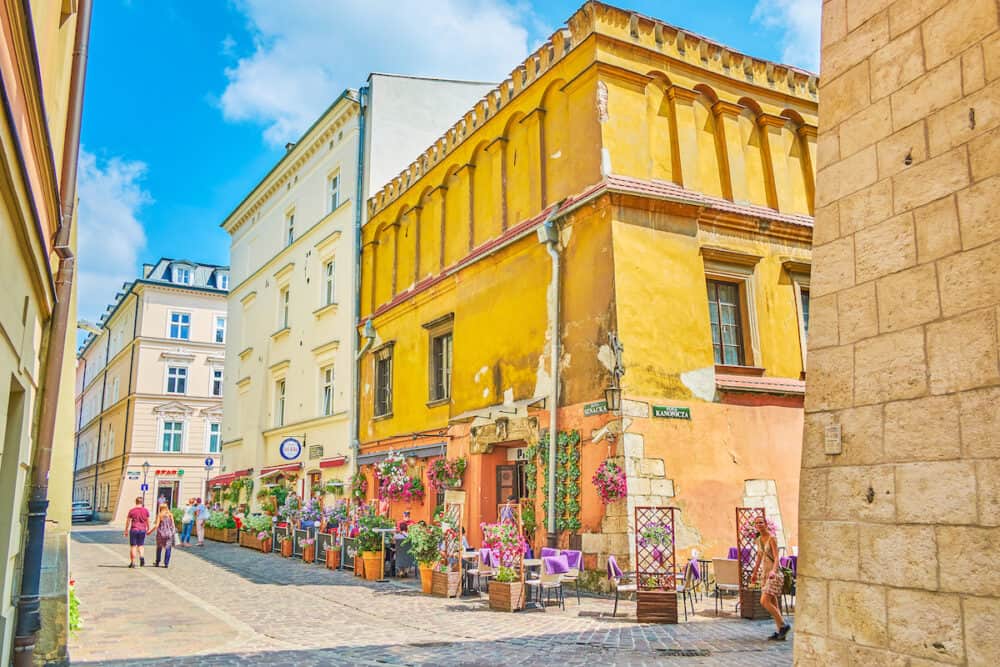
Located West of the Old Town and near the Wawel Castle, Salwator is a peaceful and upscale district. It features charming streets, beautiful villas, and the popular Błonia Park. Staying in Salwator provides a quieter environment while still being within walking distance of the main attractions.
Spring (April to June) in Krakow brings mild temperatures and blooming flowers. It’s a great time to explore the city’s outdoor attractions and enjoy pleasant walks around the Old Town and along the Vistula River. The weather can be unpredictable, so it’s advisable to pack layers.
Summer (June to August) in Krakow are warm and sunny, with temperatures ranging from the mid-20s to low 30s degrees Celsius (70s to 90s Fahrenheit). This is the peak tourist season, with many visitors flocking to the city. You can enjoy outdoor festivals, concerts, and alfresco dining. However, be prepared for larger crowds and consider booking accommodations and attractions in advance.
Plan your trip?
Avoid hidden fees in the exchange rate while withdrawing from millions of ATMs abroad, paying in restaurants and shops, and buying your accommodation and flights using the Wise Card. You can hold up to 40+ currencies at once to spend in in over 150 countries, and convert them in real time with the free Wise app.
Need help planning your trip from start to finish? Check out these helpful links:
- Cheap flights
- Savings on accommodation from hostels to luxury hotels
- Affordable car rental options
- Affordable sightseeing tours and day trips
- Travel Adapter – All in one so you don’t have to carry a bunch around
- Don’t be silly and forget Travel Insurance! Get hurt and you’ll regret it…
This post contains some affiliate links for your convenience. Click here to read my full disclosure policy. You can also read our content/editorial policy here.
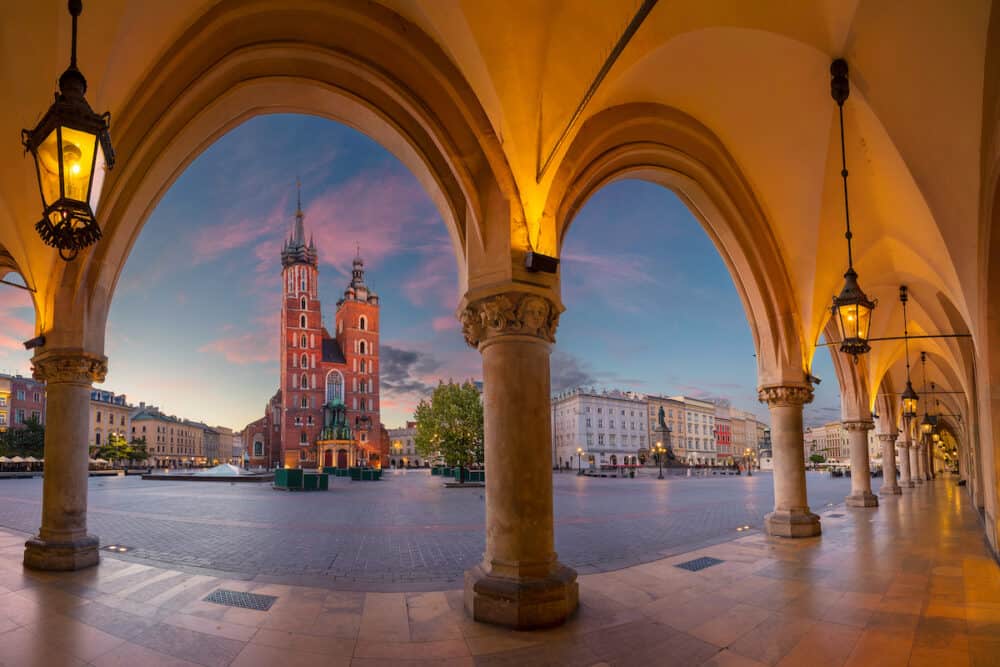
Day 1 In Krakow
Town Hall Tower
Let’s start off with getting to know a little bit more about the city of Krakow and where you’ll be basing yourself for this three day itinerary. The Town Hall Tower (Wieża Ratuszowa) is a prominent landmark located in the centre of the Old Town of Krakow, Poland.
It’s part of the historic Krakow Town Hall complex and stands tall in the Main Market Square (Rynek Główny). This is a great chance to polish up your Polish…
The Town Hall Tower dates back to the 13th century when it was constructed as part of the Krakow Town Hall. The tower underwent several architectural transformations over the centuries, resulting in its current Gothic style.
The upper part of the tower was added during the Renaissance period, while the spire and the clock were added in the 17th century.
The Tower stands at around 70 meters (230 feet) tall and is built primarily of brick. Its architectural style is predominantly Gothic, with elements of Renaissance and Baroque influences.
The tower features decorative details such as arcaded windows, ornamental friezes, and a weather vane in the shape of a golden crown. The clock on the tower’s facade is adorned with intricate astronomical and zodiac motifs.
One of the main attractions of the Town Hall Tower is its observation deck, which offers panoramic views of Krakow’s Old Town and its surroundings.
You can climb the tower’s narrow staircase to reach the top and enjoy breathtaking vistas of the Main Market Square, the St. Mary’s Basilica, the Cloth Hall, and other notable landmarks. The view is particularly stunning during sunset or in the evening when the city is illuminated.
Inside the Town Hall Tower, there are small exhibition spaces that showcase the history of Krakow and the town hall itself. The exhibits often feature historical artifacts, models, and interactive displays that provide insights into the city’s past and the tower’s significance.
You can learn about the development of Krakow and the functions of the Town Hall over the centuries. Told you you’ll be familiarizing yourself today.
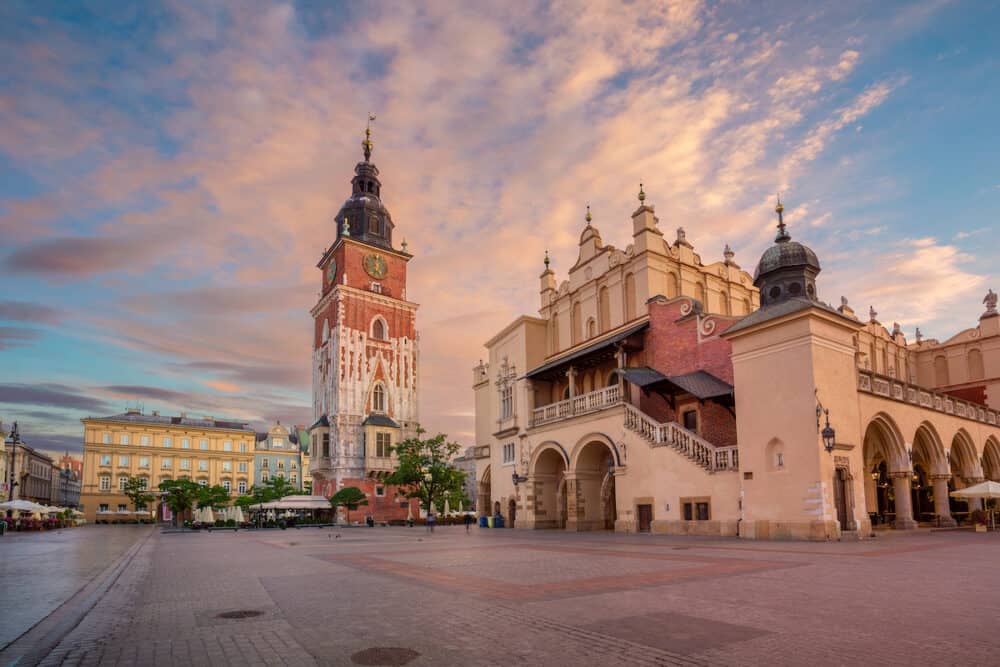
Main Market Square
Continuing your historic tour of Krakow, next up is the Main Market Square (Rynek Główny) – One of the largest medieval town squares in Europe.
The Main Market Square has a super cool history dating back to the 13th century when it was established as a center for commerce and trade. It was originally a bustling marketplace where merchants from near and far gathered to sell their goods.
Over the centuries, the square witnessed significant events and has remained a focal point of Krakow’s cultural, social, and economic life.
The square is surrounded by a stunning array of architectural diamonds that showcase various styles from different periods. The most notable landmark is the Cloth Hall (Sukiennice), a magnificent Renaissance building located in the center of the square.
It has a long history as a trading hub and now houses souvenir shops and the Gallery of 19th-Century Polish Art.
One of the highlights of the Main Market Square is the majestic St. Mary’s Basilica (Kościół Mariacki). Its twin towers dominate the skyline of Krakow and offer fantastic views of the city. The interior of the basilica is equally impressive, with a stunning altarpiece carved by Veit Stoss and beautiful stained glass windows.
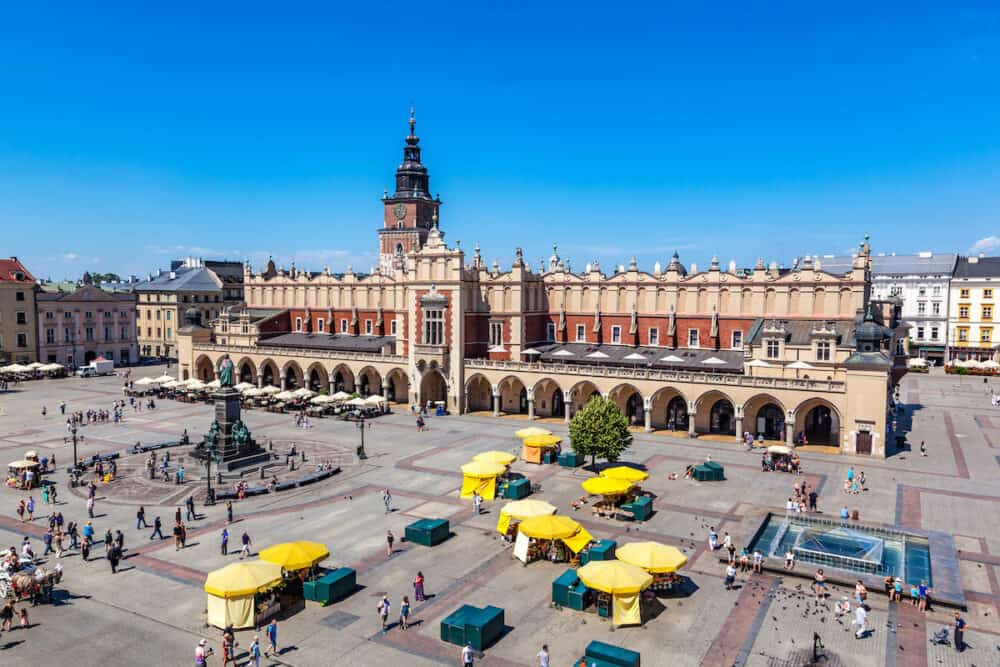
Auschwitz Concentration Camp
Today has been all about history, and to complete this part of Krakow’s history, your final stop will be a harrowing experience that isn’t for the faint of heart. Auschwitz, also known as Auschwitz-Birkenau, is one of the most infamous concentration and extermination camps from World War II.
Located near the Polish town of Oświęcim, about 70 kilometers (43 miles) West of Krakow, it stands as a somber reminder of the atrocities committed during the Holocaust.
Established by Nazi Germany in 1940, Auschwitz became the largest and deadliest concentration camp during World War II. Its primary purpose was to implement the “Final Solution,” the Nazi plan for the systematic extermination of European Jews.
However, the camp also held and persecuted other groups, including Romani people, Poles, Soviet prisoners of war, and political dissidents.
Auschwitz consisted of three main sections: Auschwitz I, Auschwitz II-Birkenau, and Auschwitz III-Monowitz. Auschwitz I was the administrative center, containing the camp’s headquarters, prison blocks, and the infamous “Arbeit Macht Frei” gate.
Auschwitz II-Birkenau, located about three kilometers away, served as the extermination camp, with gas chambers and crematoria designed to facilitate mass murder. Auschwitz III-Monowitz was a labor camp associated with the IG Farben chemical company. You’ll be able to choose which part you’d like to specifically visit.
Visiting Auschwitz requires sensitivity and emotional preparedness due to the gravity of the site. It provides an opportunity to reflect on the Holocaust, honor the victims, and reaffirm the commitment to upholding human rights and preventing genocide.
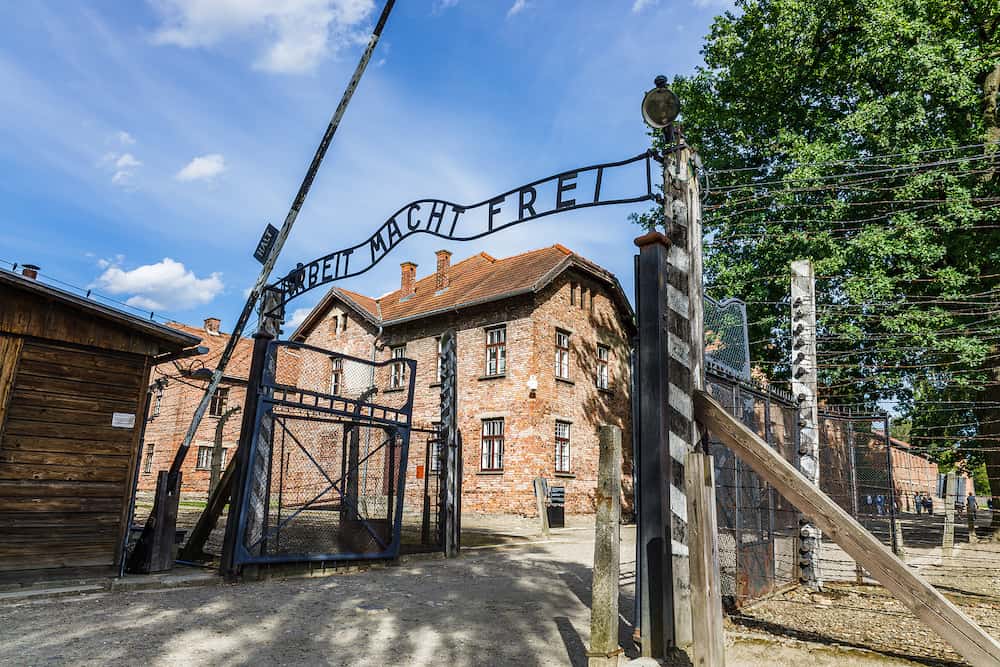
Day 2 In Krakow
Vistula River
After yesterday afternoon, let’s return to something more lighthearted and fun, such as cruising down the Vistula River. The Vistula River (Wisła in Polish) is the longest and one of the most significant rivers in Poland.
It flows through several major cities, including Krakow, Warsaw, and Gdansk, and plays a vital role in the country’s history, culture, and natural landscape. It originates in the Beskid Mountains in Southern Poland and flows northwards, eventually emptying into the Baltic Sea near Gdansk.
The Vistula River has historically been an essential transportation route for the country’s trade and commerce. It facilitated the movement of goods and people, allowing for economic growth and cultural exchange.
While its significance as a trade route has diminished with the advent of modern transportation, the river remains vital for the shipping industry, recreational boating, and water tourism. You know what they say… Water is the lifeblood of all living things, and it sure has brought Krakow to life.
The river’s floodplain, wetlands, and forests are home to numerous bird species, including migratory birds, and serve as important nesting and feeding grounds. Additionally, the river sustains various fish species, such as pike, perch, and zander, making it a popular destination for anglers.
The Vistula River is adorned with several bridges that connect different parts of cities and facilitate transportation.
These bridges, such as the Father Bernatek Footbridge in Krakow, have become iconic landmarks and offer stunning views of the river and the surrounding landscapes. They serve as symbols of architectural and engineering excellence.
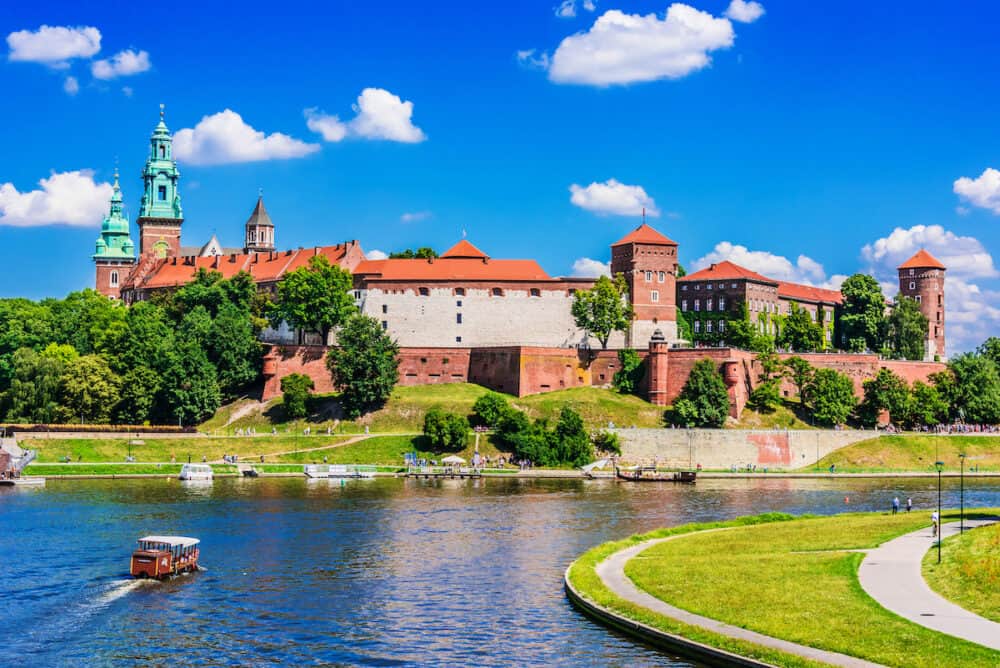
Rynek Underground Museum
Next up, you’ll head into the Stranger Things world of the “upside down”. You’ll make your way to the Rynek Underground Museum (Muzeum Podziemne Rynku) which is a fascinating museum located beneath the Main Market Square.
The Rynek Underground Museum showcases the archaeological findings and historical significance of the Main Market Square, which dates back to the 13th century. The museum provides insights into the daily life, trade, and development of Krakow during the medieval period.
The museum’s exhibition is situated beneath the Main Market Square and covers an area of over 4,000 square meters (43,000 square feet). It features an extensive collection of artifacts, interactive displays, multimedia presentations, and reconstructed scenes that bring the past to life.
Visitors can explore the underground passages and chambers, providing a glimpse into the bustling marketplace of centuries ago.
The museum is organized thematically, focusing on various aspects of medieval life in Krakow. Exhibits cover topics such as trade and craftsmanship, religious rituals, city defense, and the daily lives of the city’s inhabitants.
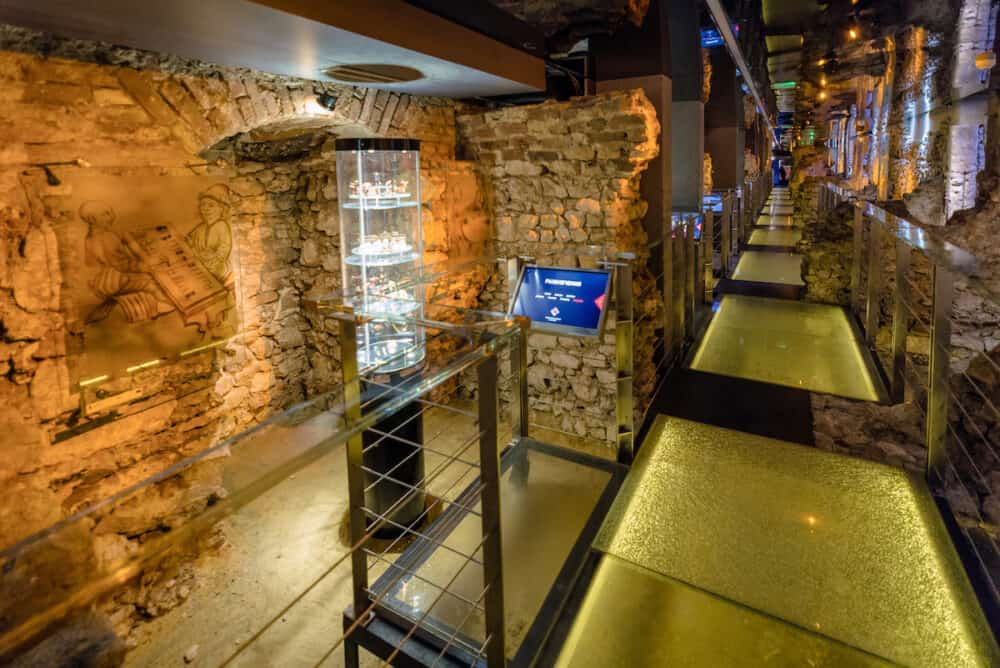
Wieliczka Salt Mines
You’ll stick with the underground for this next one. Even though you might be feeling like a sweet afternoon tea, you’ll have to wait a bit and settle for a pinch of salt instead.
The Wieliczka Salt Mine is a UNESCO World Heritage site located near the town of Wieliczka, just outside of Krakow, Poland. It is one of the world’s oldest and most remarkable salt mines, known for its historical significance, architectural beauty, and unique underground attractions.
The Wieliczka Salt Mine has a history that spans over 700 years, with salt production beginning in the 13th century and continuing until 2007.
It played a vital role in the economy of the region, contributing to the wealth and prestige of the Polish Kingdom. The mine was a significant source of revenue and helped Krakow become one of the wealthiest cities in Europe.
The mine features a network of tunnels, chambers, chapels, and even an underground lake, all carved out of salt. Skilled miners and artists transformed the salt deposits into magnificent sculptures, intricate salt reliefs, and stunning salt crystal chandeliers.
One of the most remarkable features of the Wieliczka Salt Mine is its collection of underground chapels. These chapels were carved by the miners as places of worship and are adorned with intricate salt sculptures, altarpieces, and religious statues.
The most famous of these is the St. Kinga’s Chapel, a stunning chamber that serves as a venue for weddings, concerts, and other special events.
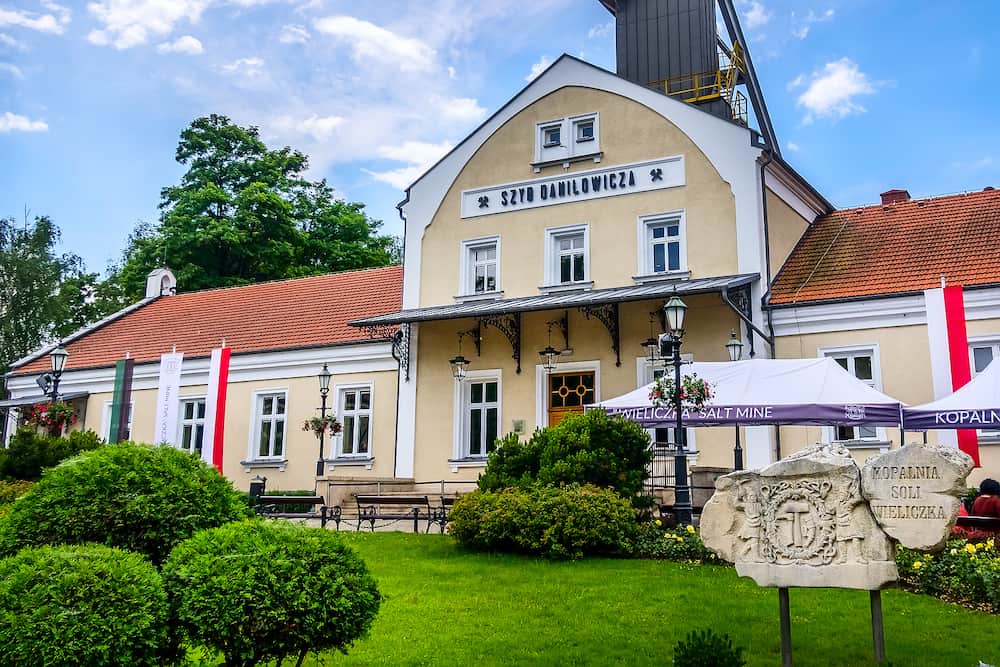
Day 3 In Krakow
Sigismund Bell Tower
As your exploration and 3 day itinerary for Krakow comes to a close, you still have a few more Polish favorites to tick off. So freshen up, fuel up and onward you’ll go to The Sigismund Bell Tower (Wieża Zygmuntowska) which is an iconic landmark located in the Wawel Castle complex.
It is named after Sigismund I, the King of Poland, and is known for its historical significance and the beautiful Sigismund Bell that resides within.
The Sigismund Bell Tower has deep historical roots and is closely tied to the Polish monarchy. Construction of the tower began in the 14th century during the reign of King Casimir III, and it underwent subsequent renovations and additions over the centuries.
The tower was used for various purposes, including housing the castle’s watchmen and serving as a fire lookout.
The most notable feature of the tower is the Sigismund Bell (Dzwon Zygmunt) housed within it. The bell was cast in 1520 by Hans Behem, a renowned bellfounder from Nuremberg. It weighs approximately 13 tons and is considered one of the largest bells in Poland.
The Sigismund Bell holds great symbolic importance and has been used to mark significant events, such as royal coronations, funerals, and national celebrations.
You’ll have the opportunity to climb its narrow staircase to reach the viewing platform. From there, they can enjoy breathtaking panoramic views of the city, including the Vistula River, the Old Town, and landmarks such as St. Mary’s Basilica and the Main Market Square. It offers a unique vantage point to appreciate Krakow’s beauty and historical architecture.
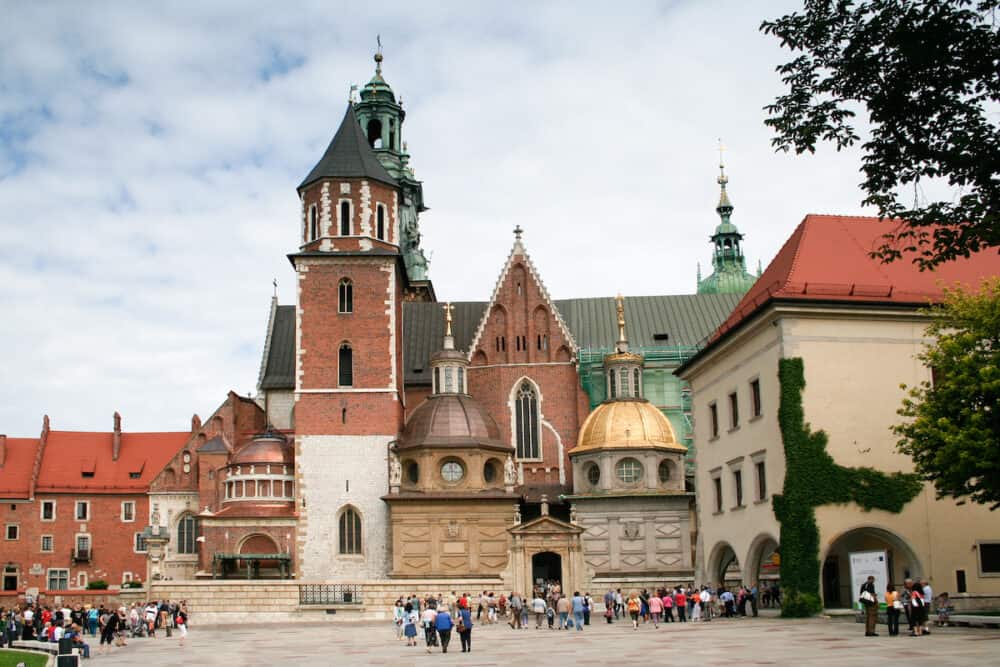
Schindler’s Factory Museum
You may have noticed that Krakow has an industrialized past that spans world wars and battles from beyond. There’s one more place that has a similar vibe, once again leaving its visitors speechless. But you’re used to that by now, Krakow does seem to have that effect on people.
Schindler’s Factory Museum is located in the former administrative building of Oskar Schindler’s Enamel Factory, which played a significant role during World War II.
The museum tells the story of Oskar Schindler, a German industrialist who saved over a thousand Jewish lives by employing them in his factory and shielding them from Nazi persecution.
The museum features a range of multimedia exhibits, archival materials, personal testimonies, photographs, and artifacts that depict the wartime era. You can explore the factory’s original administrative rooms, including Schindler’s office, and learn about the lives of the Jewish workers who were employed there.
The permanent exhibition in the museum is divided into several thematic sections. It provides a comprehensive overview of the historical context, Nazi occupation, and the efforts made by Schindler to protect his Jewish workers.
The exhibition also delves into the wider impact of the war on Krakow and Poland as a whole.
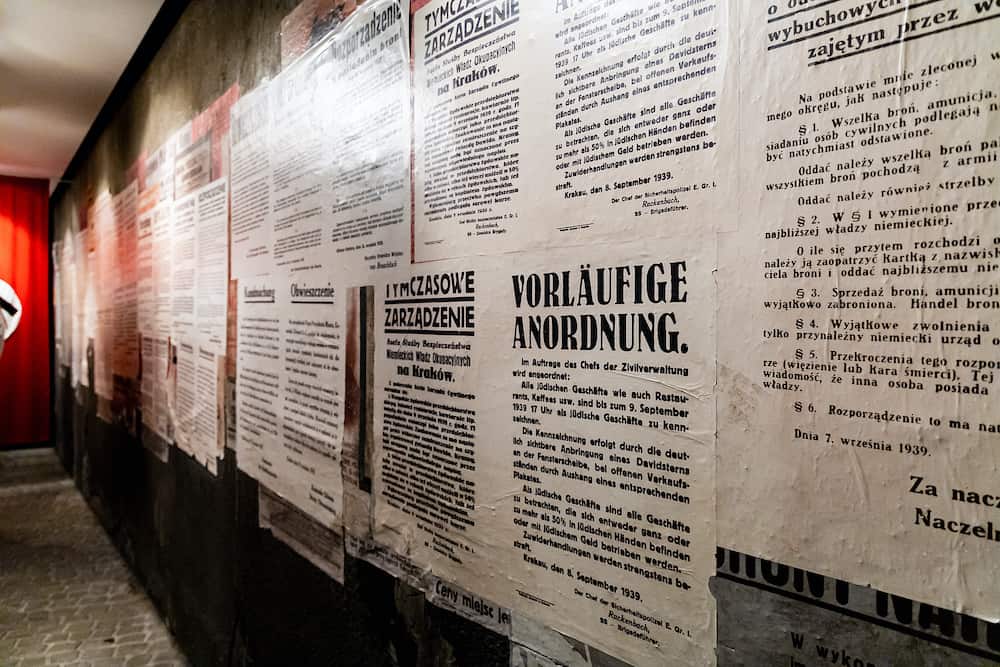
Krakow Food Tour
After all that waking, you must be famished. That’s a good thing though, because you’ve saved the best for last of your three days in Krakow. For the rest of the day you’re going to eat like the Poles and leave Krakow a few pounds heavier – that’s okay though, it’s worth it!
Start your food tour at the heart of Krakow, the Main Market Square. Here, you’ll find numerous food stalls and restaurants offering a variety of Polish dishes, including pierogi (dumplings), zapiekanki (Polish baguette pizzas), and obwarzanki (traditional Polish pretzels). It’s an excellent place to sample local street food and soak up the lively atmosphere.
Head to the historic Jewish Quarter, Kazimierz, which is renowned for its vibrant culinary scene. Explore the area’s charming streets and stop by Jewish-owned restaurants and cafes to savor traditional Jewish dishes such as matzo ball soup, gefilte fish, and challah bread.
Don’t miss trying the delicious traditional pastries like rugelach or pączki (Polish donuts) at local bakeries.
Visit the Nowa Huta neighborhood, which was built as a socialist realist model city in the communist era. Here, you can experience authentic Polish cuisine at milk bars (bar mleczny), which are affordable canteen-style eateries that serve traditional Polish dishes.
Try classics like bigos (hunter’s stew), gołąbki (stuffed cabbage rolls), and placki ziemniaczane (potato pancakes) for an authentic taste of Polish home cooking.
Krakow boasts several food markets where you can explore and taste a wide range of local products. The Hala Targowa market offers an array of fresh produce, meat, cheese, and regional specialties.
The Stary Kleparz market is known for its vibey atmosphere and a vast selection of fruits, vegetables, and artisanal products. Take the opportunity to sample local cheeses, cured meats, and pickles from the market stalls.
Krakow is known for its delightful sweet treats. Indulge in a visit to a traditional Polish candy store or a renowned confectionery to taste Polish desserts like sernik (Polish cheesecake), makowiec (poppy seed cake), or pierniki (spiced gingerbread). Don’t forget to try a cup of Polish-style hot chocolate, which is rich and velvety.
Would you look at that, it’s drinking time! Poland is famous for its vodka, and Krakow offers excellent opportunities for vodka tasting.
Visit one of the city’s vodka bars or specialized vodka tasting venues to sample a variety of flavored and traditional vodkas. Learn about the history and production process while enjoying the distinct flavors of Polish vodka.

Final Thoughts: 3 day krakow itinerary
Is Krakow worth visiting? Absolutely! Krakow is an amazing city and the perfect destination for a 3-day getaway. From its famous bars to its beautiful castles, there’s something for everyone!
With this article, you can explore the best of what Krakow has to offer and end your trip with a feeling of true satisfaction.
Make sure to book some of these tours so that you can make your Krakow experience as complete as possible – you won’t regret it!
Recommended tours in Krakow
- Auschwitz-Birkenau Memorial and Museum Guided Tour from Krakow
- Day Trip to Auschwitz-Birkenau and Wieliczka Salt Mine from Krakow including Lunch
- Zakopane Tour and Thermal Hot Bath Pool with Krakow Hotel Pickup
- Pub Crawl + Unlimited Drinks + VIP entry + Drinking Games & Photographer
- Kraków In a Nutshell: Walking Tour
- Krakow: Extreme Shooting Range with Hotel Pick-Up
- Axe Throwing Krakow in Axe Nation – best club in Poland
- Krakow Food Tasting Tour with Delicious Poland
- Sightseeing Bike Tour of Krakow
- The Kraków Vodka Tour
Read more on Poland:
- 22 Enchanting Castles You Must See Around the World
- 15 things you should know about Poland
- 11 Cheap Travel Destinations In Europe
- Where to Stay in Warsaw
- 48 hours in Warsaw – A 2 day Itinerary
- Ultimate Travel Guide to Warsaw
- Where to stay in Krakow
- Fun Things to do in Krakow
- 48 Hours in Krakow – 2 Day Itinerary
- Where to stay in Bydgoszcz
- The Ultimate Guide to Bydgoszcz
- Where To Stay in Wroclaw
- 48 Hours in Wroclaw – 2 Day Itinerary
- Ultimate Travel Guide to Wroclaw
- Where To Stay in Torun
- 18 Things to do in Torun
- 48 Hours in Toruń – A Two Day Itinerary
If you’d like to save it for later, please save it to Pinterest.
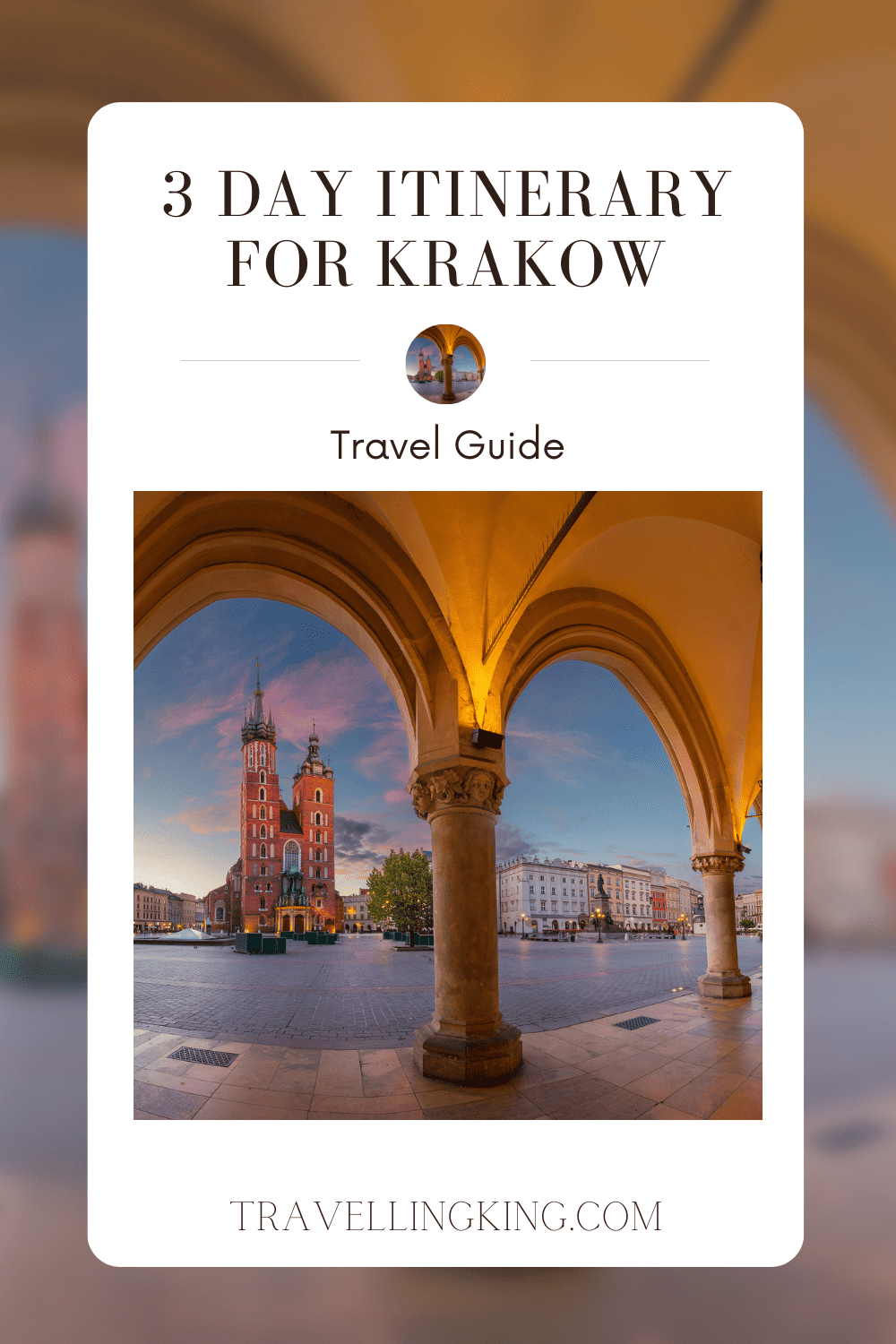
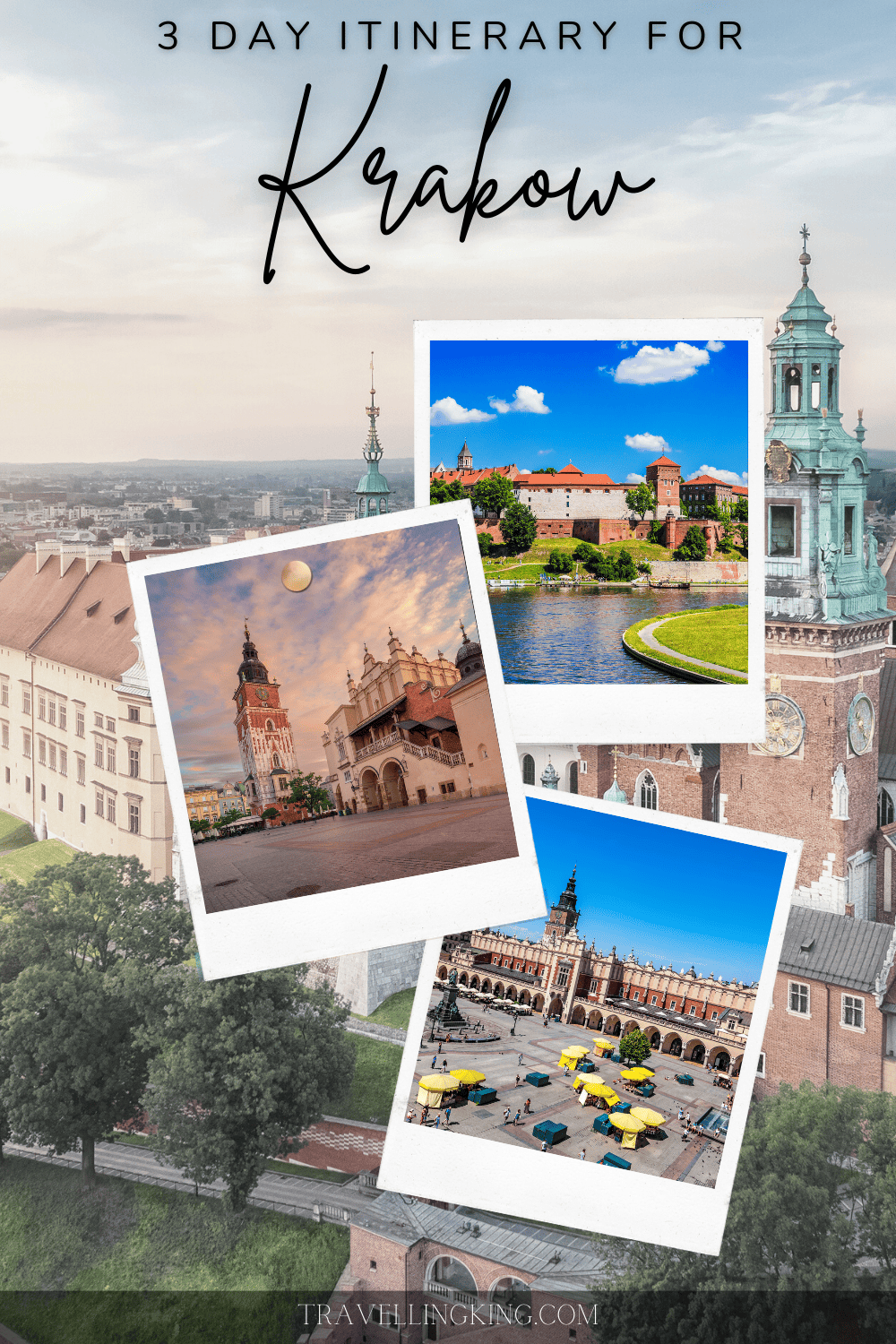


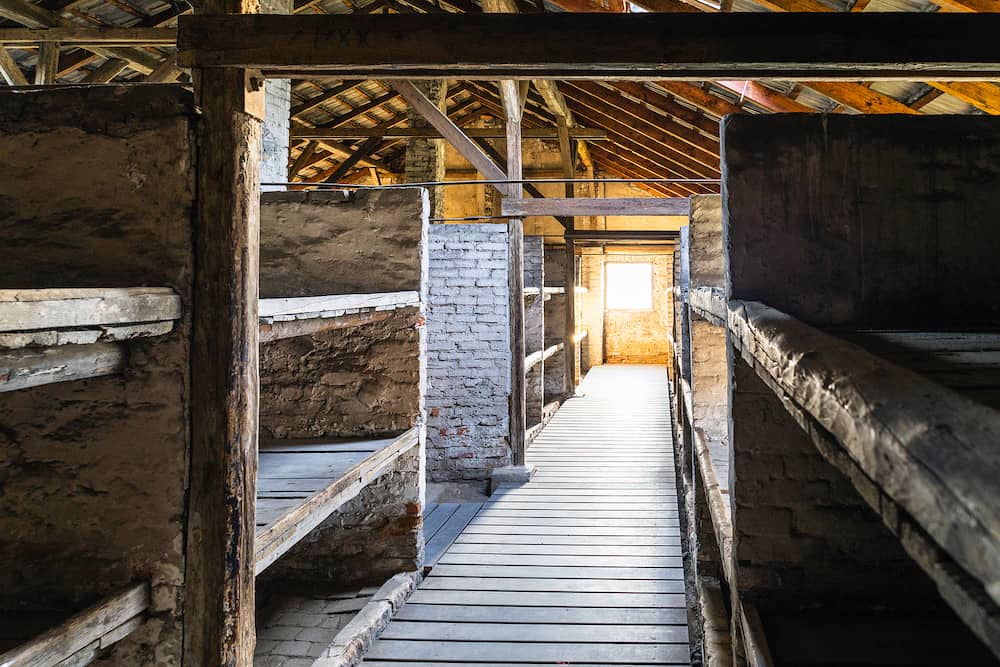
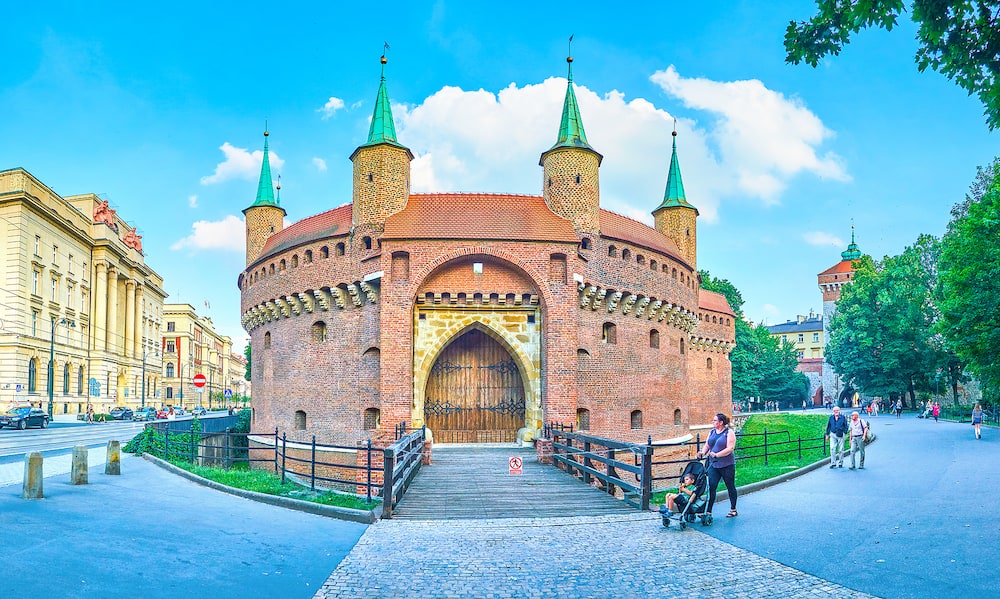
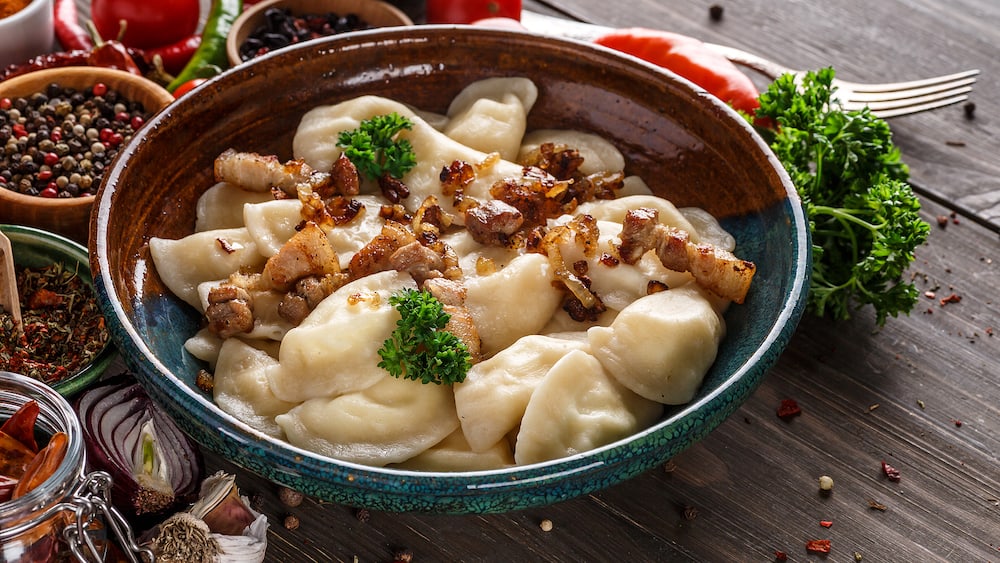

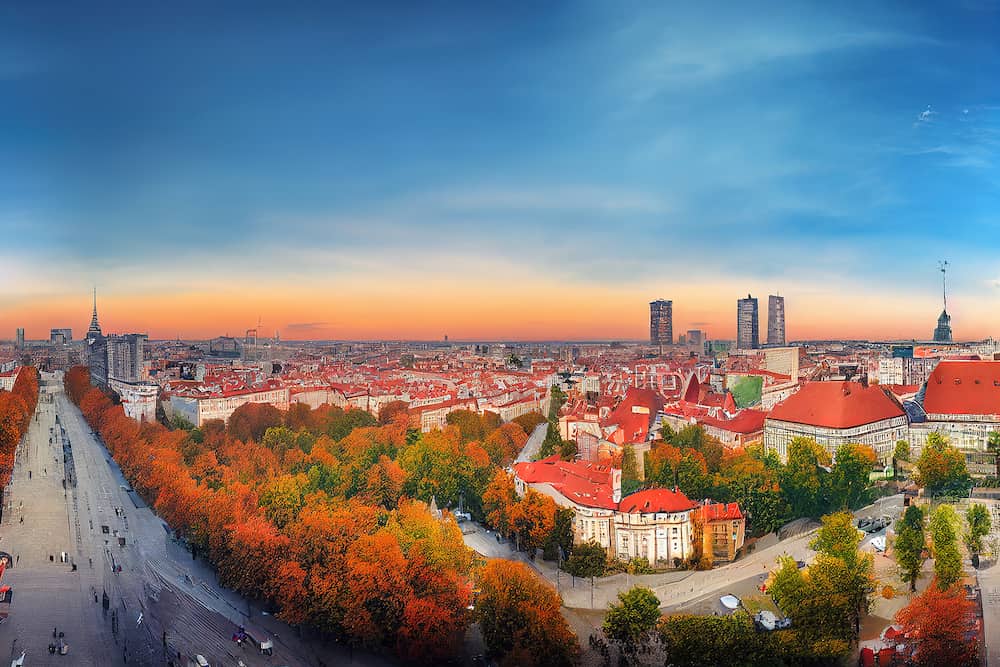
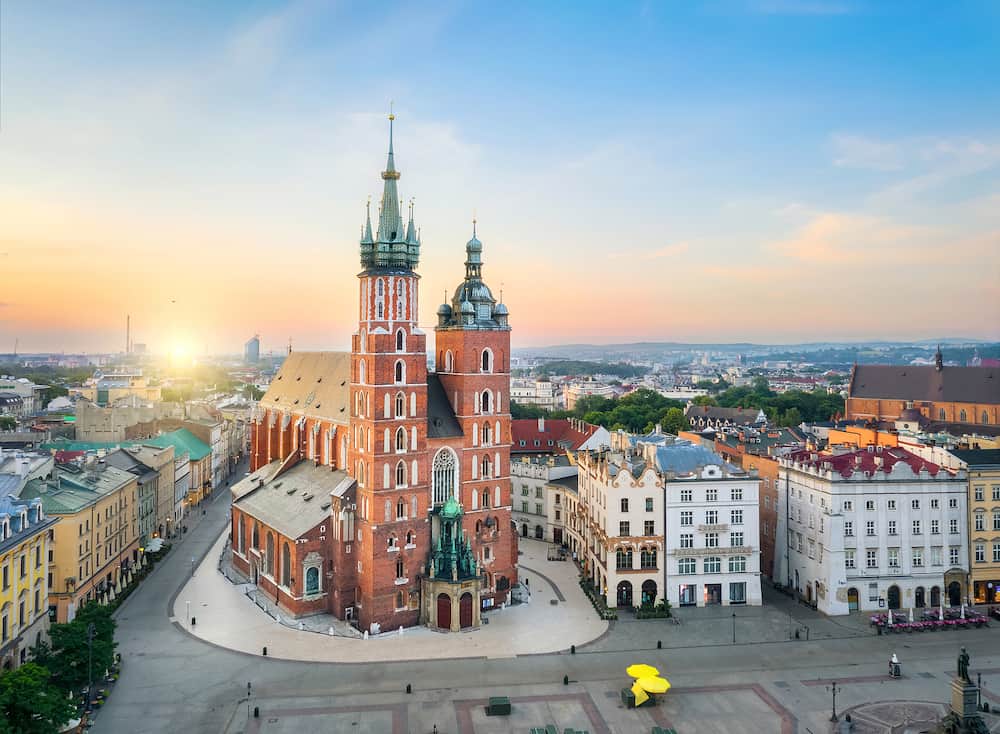
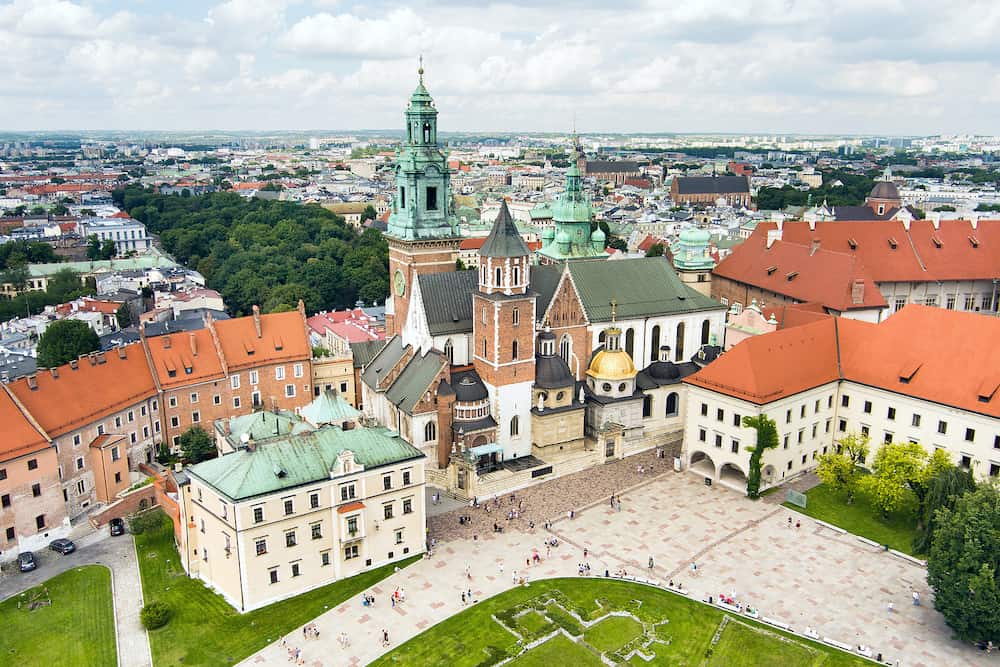
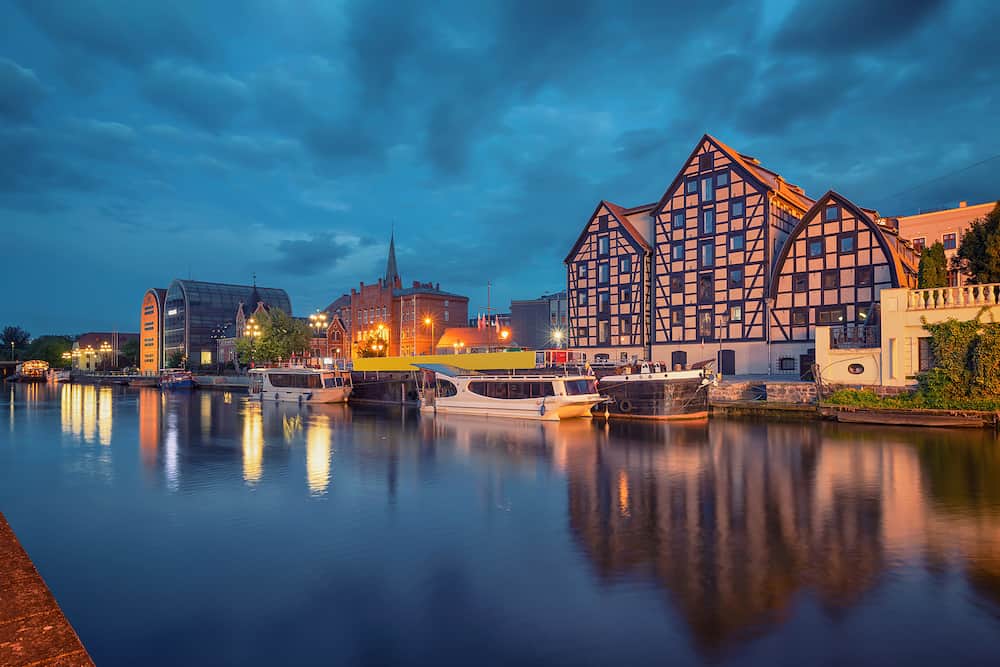
![Where To Stay in Wroclaw [Best Places to Stay for 2024]](https://www.travellingking.com/wp-content/uploads/2022/10/Wroclaw-Multicolored-traditional-historical-houses-and-City-Hall-on-Market-square-at-sunset-Old-Town-of-Wroclaw-Poland.jpg)
